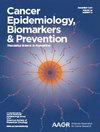乳腺癌患者的表观遗传衰老因种族、亚型和社会脆弱性指数而异
IF 3.7
3区 医学
Q2 ONCOLOGY
引用次数: 0
摘要
目的:虽然黑人和白人妇女在发病年龄、亚型和死亡率方面的乳腺癌(BrCa)差异已得到公认,但其根本原因仍不清楚。我们对甲基化对种族差异、乳腺癌亚型和社会脆弱性指数(SVI)的影响很感兴趣。研究方法使用全基因组甲基化阵列,从确诊为 BrCa 的女性血液样本中提取 DNA。经过质量控制后,共纳入 158 名 BrCa 患者。使用 Horvath 和 GrimAge 时钟计算了生物年龄和表观遗传年龄加速度,生物年龄和表观遗传年龄加速度的定义是回归年代年龄和生物年龄后的残差。使用 Mann-Whitney 检验和线性回归模型评估了自报种族、BrCa 分子亚型(ER 和 HER2)和 SVI 等独立因素与年龄的关系。统计显著性定义为 P 值为 0.05。结果近三分之一的样本是自我报告的黑人女性(28.8%),诊断时的总体平均年龄为 57.8 岁 ±11.6。诊断为ER-和HER2+ BrCa的女性比例分别为43.6%(68人)和14.7%(23人)。总体而言,根据 GrimAge 时钟(P = 0.005)和 Horvath 时钟(P = 0.52)估算,黑人妇女的平均年龄加速度比白人妇女高 2.41 岁。在 ER- BrCa 亚型中,黑人女性的平均生理年龄比白人女性大 1.68 岁(P = 0.24)。同样,在 HER2+ BrCa 中,黑人女性的生理年龄比白人女性大 2.62 岁(P = 0.14)。此外,SVI 中位数分层分析发现,在 SVI 上位数中,黑人妇女的年龄比白人妇女大 1.24 岁。在较低的 SVI 分层分析中,黑人女性的生理年龄比白人女性小 0.67 岁。结论:我们的分析确定了黑人和白人乳腺癌患者自我报告的表观遗传年龄加速度差异具有统计学意义。按 BrCa 亚型和 SVI 进行的分层分析都得出了自我报告种族的生物年龄差异,但是,不同分层的方向性效应不同。虽然我们的样本量有限,但我们的分层分析为更好地了解 BrCa 的种族差异提供了新的研究方向。本文章由计算机程序翻译,如有差异,请以英文原文为准。
Epigenetic Aging Differs By Race, Subtype and Social Vulnerability Index in Breast Cancer Patients
Purpose: Although breast cancer (BrCa) disparities by age of onset, subtype and mortality are well recognized between Black and White women, the underlying causes remain unknown. We were interested in the impact of methylation on racial disparities, BrCa subtypes and social vulnerability index (SVI). Methods: A whole-genome methylation array was used with DNA extracted from blood samples from women diagnosed with BrCa. After quality control, 158 BrCa patients were included. The biological age and epigenetic age acceleration, defined as the residual from regressing chronological and biological age, were computed using Horvath and GrimAge clocks. The association with aging for the independent factors of self-reported race, BrCa molecular subtypes (ER and HER2), and SVI were evaluated with Mann-Whitney tests and linear regression models. Statistical significance was defined as a P value <0.05. Results: Nearly one-third of our sample were self-reported Black women (28.8%) and the overall mean age at diagnosis was 57.8 years ±11.6. The proportion of women diagnosed with ER− and HER2+ BrCa was 43.6% (N = 68) and 14.7% (N = 23), respectively. Overall, the mean age acceleration is estimated as 2.41 years greater for Black women compared to White women by the GrimAge clock (P = 0.005), and 0.87 years for the Horvath clock (P = 0.52). Among ER- BrCa subtypes, Black women had an average biological age of 1.68 years greater than White women (P = 0.24). Similarly, among HER2+ BrCa, the biological age for Black women was 2.62 years older than White women (P = 0.14). In addition, the SVI median stratified analysis identified a 1.24-year increased age difference for Black women compared to White women in the upper SVI. In the lower SVI stratified analysis, the biological age for Black women was 0.67 years younger than White women. Conclusions: Our analysis identified statistically significant epigenetic age acceleration differences between self-reported Black and White BrCa patients. Both stratified analyses by BrCa subtype and SVI yielded biological age differences by self-reported race, however, directional effects differed based on strata. Although our sample size is limited, our stratified analysis revealed novel research directions to better understand racial disparities in BrCa.
求助全文
通过发布文献求助,成功后即可免费获取论文全文。
去求助
来源期刊

Cancer Epidemiology Biomarkers & Prevention
医学-公共卫生、环境卫生与职业卫生
CiteScore
6.50
自引率
2.60%
发文量
538
审稿时长
1.6 months
期刊介绍:
Cancer Epidemiology, Biomarkers & Prevention publishes original peer-reviewed, population-based research on cancer etiology, prevention, surveillance, and survivorship. The following topics are of special interest: descriptive, analytical, and molecular epidemiology; biomarkers including assay development, validation, and application; chemoprevention and other types of prevention research in the context of descriptive and observational studies; the role of behavioral factors in cancer etiology and prevention; survivorship studies; risk factors; implementation science and cancer care delivery; and the science of cancer health disparities. Besides welcoming manuscripts that address individual subjects in any of the relevant disciplines, CEBP editors encourage the submission of manuscripts with a transdisciplinary approach.
 求助内容:
求助内容: 应助结果提醒方式:
应助结果提醒方式:


